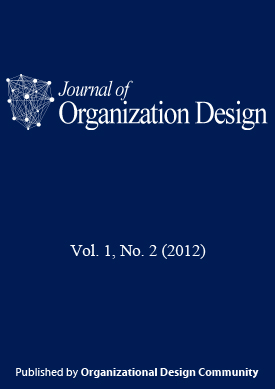Design of Industrial and Supra-Firm Architectures: Growth and Sustainability
DOI:
https://doi.org/10.7146/jod.6454Keywords:
Industry architecture, organization design, modularity, industrial clusters, integrality, Chinese automotive industry, electric vehicles, electric two-wheeled vehiclesAbstract
The scope of organization design has expanded steadily from work-flow issues and job specifications to firm-level considerations and now to supra-firm industrial structures, where such issues as modularity and clustering loom large. Economic analysis has made little headway in analyzing how increasing returns may be generated through supra-firm structures such as networks and clusters, nor in the question of how their industrial architecture (modular vs. integral, open vs. closed) affects economic performance. The focus here is on the supra-firm industrial architectures that have arisen, either spontaneously through the evolution of capitalism or through purposeful design, involving both state and private actors. Striking cases such as the Chinese automotive industry, which started with the production of conventional automobiles and motorcycles, and now encompasses both two-wheeled and four-wheeled electric vehicles, provide testimony to the power of some industrial configurations to outperform others. My analyses and arguments are placed in the global context of the urgent need to find ways to accelerate the uptake of green technologies (such as electric vehicles) in order to reduce emissions of greenhouse gases and at the same time promote the industrialization of countries still at lower levels of income and wealth.
Published
How to Cite
Issue
Section
License
JOD requires that at least one author of each accepted paper sign a Copyright Transfer Agreement form. Copyright will be transferred to Organizational Design Community when the paper has been accepted.
Articles published in JOD are licensed under a Creative Commons Attribution-NonCommercial-NoDerivs 4.0 Unported License.



